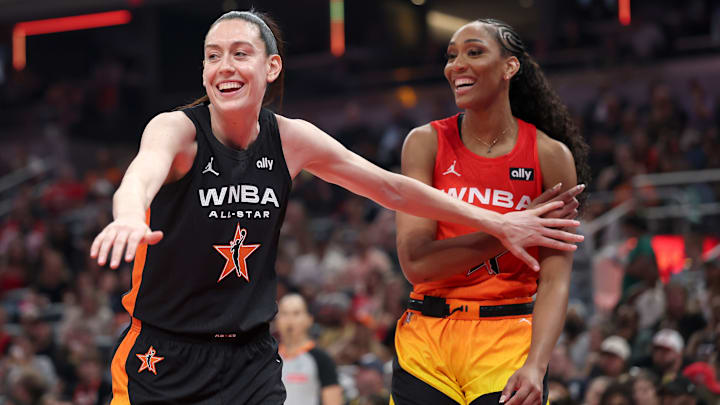Going into the offseason, there is a lot of discourse in the WNBA about how teams won’t look the same next season. Some of that is attributed to the fact that the WNBA is welcoming in two new expansion teams — the Toronto Tempo and Portland Fire — but that alone won’t shift the dynamic of the league too much. The real movement is going to happen in the WNBA’s free agency period.
WNBA free agency has only gotten truly exciting in the past few seasons. Before that, players were restricted when it came to moving teams due to things like a lack of salary cap flexibility. There was not much disparity in what teams could offer, and unless some big fallout happened with a player and their team, staying in one city and creating roots was just simpler. In the past five years, things like fancy player facilities, higher salaries, and team investment have moved the needle on what free agency can look like.
WNBA free agency is going to be unprecedented chaos this year
Yet, 2026 free agency in the WNBA is going to be unlike anything this league has ever seen, even in the last few years. About 80 percent of the players who played in 2025 are going into the offseason as free agents. The only people truly locked into contracts are those still on rookie deals, so basically any player who has less than four years of WNBA experience and has never been wavied off their rookie scale contract.
Here a few of the biggest names in free agency this year:
- Breanna Stewart
- Sabrina Ionescu
- Kelsey Mitchell
- Jackie Young
- Kahleah Copper
- Arike Ogunbowale
- Satou Sabally
- Alyssa Thomas
- Skylar Diggins-Smith
- Kayla McBride
- Kelsey Plum
- A'ja Wilson
- Chelsea Gray
- Nneka Ogwumike
- Jonquel Jones
- Napheesa Collier
- Allisha Gray
If you're keeping count, that's 18 of the 25 players who were All-Star selections last season and eight of the last 10 MVPs. And that's just the stars at the top — this is a huge infusion of elite talent.
Why are all the players suddenly on the market? It goes back to the ongoing contract negotiations between the players’ union and the WNBA. Knowing the players were going to opt out of their current deal at the end of the 2025 season, many had their agents negotiate their contracts with teams to end this season as well. There are two major reasons to align your contract ending with the Collective Bargaining Agreement ending.
First, it allows players to have full flexibility in knowing exactly what they can ask for in contract negotiations after the new deal is signed. Of course, salaries will be raised in this new deal, but there are many other benefits on the table for players as well. The core designation of the previous CBA may no longer exist, and the league may have other benefits or bonuses it could offer to players in this next deal. If possible, it makes sense to align your personal contract renewal with the overall deal.
The second reason is so that players can use their lack of contracts as a negotiating tactic. You can’t have a league without 80 percent of its players, and most of the WNBA’s stars (except the newer generation) fall into that 80 percent. If the players need to pull the “then we just won’t play” strategy, they are under no obligation to come back and play. A strike is another tactic they can use, but this gives each player a bit of personal autonomy to say “hey, I don’t like what I am being offered,” even after a deal is potentially signed. It also allows players who have been cored the ability to let that expire, in case that is not a part of the new CBA.
While it definitely isn’t necessary to have everyone’s contracts end with the current CBA, it is definitely a strategy of solidarity for the players. Going into this new CBA with fresh contracts for whoever is eligible is just another way to ensure players are receiving what they want.
